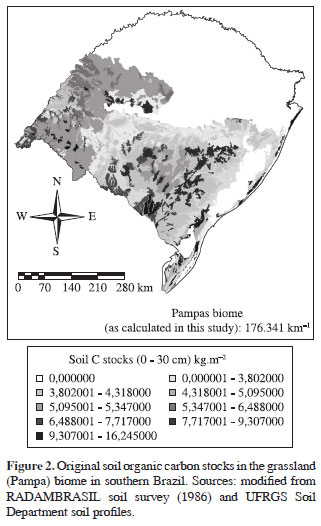The southern Brazilian grassland biome contains highly diverse natural ecosystems that have been used for centuries for grazing livestock and that also provide other important environmental services. Here we outline the main factors controlling ecosystem processes, review and discuss the available data on soil carbon stocks and greenhouse gases emissions from soils, and suggest opportunities for mitigation of climatic change. The research on carbon and greenhouse gases emissions in these ecosystems is recent and the results are still fragmented. The available data indicate that the southern Brazilian natural grassland ecosystems under adequate management contain important stocks of organic carbon in the soil, and therefore their conservation is relevant for the mitigation of climate change. Furthermore, these ecosystems show a great and rapid loss of soil organic carbon when converted to crops based on conventional tillage practices. However, in the already converted areas there is potential to mitigate greenhouse gas emissions by using cropping systems based on no soil tillage and cover-crops, and the effect is mainly related to the potential of these crop systems to accumulate soil organic carbon in the soil at rates that surpass the increased soil nitrous oxide emissions. Further modelling with these results associated with geographic information systems could generate regional estimates of carbon balance.
pampa biome; management; soil organic matter; global warming; climate change






